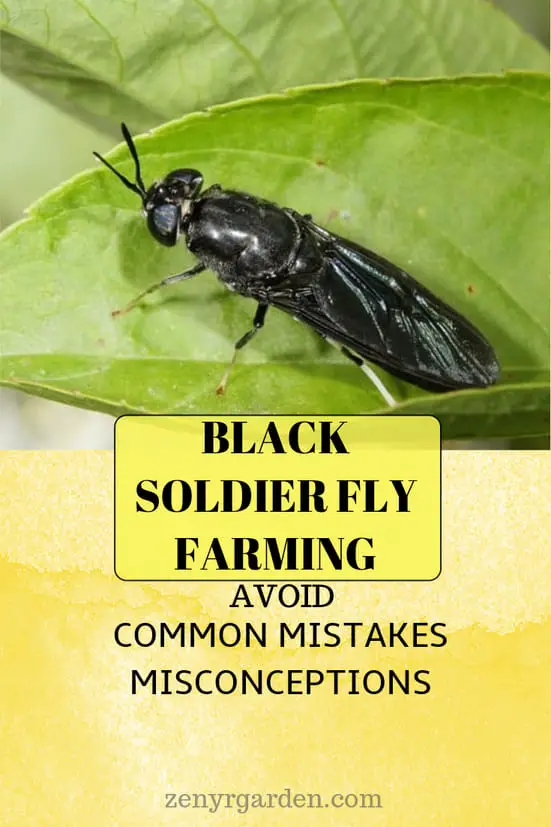Here are the common misconceptions or mistakes in black soldier fly farming:
#1. Non-Moving Larvae Are Dead
When you see non-moving BSF larvae, they may not have been dead at all.
If the Non-Moving Larvae Have Turned Black:
If the creatures have turned black, are quite elongated and have formed a hard outer shell then it is completely normal for them to stop moving at this point. These pupae are under going metamorphism to become flies.
It is in its natural cycle so you have nothing to worry at this point. And about a week from here, these non-moving pupae will emerge into flies if things go well.
If the Motionless Larvae Are Cream In Color:
Secondly, non-moving larvae may be going into dormancy. These are usually the cream larvae. When temperature drops below 65F (18C), their metabolism tends to slow down. Thus, they eat less and move less to conserve energy. This can happen during the winter months when it's cold.
But don't worry, the larvae during this time won't die. They will go into sleep mode or hibernate in the winter. Because they don't eat or move much, you may see them get much smaller in size, but good news is they are still alive.
What Temperature May Cause the Larvae To Die Then?
The temperatures that may kill the BSF larvae are above 110F (43C) and under 20F (-6C).
If it gets too hot, the larvae may try to evacuate out or at times turn dark early. People call these immature crawl-offs. They have weaker health than the normal larvae and may die young after pupation. The other hot temperature point is when people boil the larvae for harvesting.
They can withstand cold temp from 50-60F (10-15C). Under this range, the larvae may be frozen to death.
To keep them alive and happy, the temperature range between 75-86F (24-30C) will be fine.
#2. Stacking Too Much Pupae In One Love Cage
Stemming from business or cost-saving needs, growers have tried stuffing a lot of pupae into one love cage, thinking it may save space and the egg return could be more per square space. This has been done and it has been shown to be counter-productive.
The stuffing of too many flies creates a stacking problem. When flying and landing on the net, the flies may stack upon each other. As lots of them crowd in one corner, some may inevitably bump on others' wings, antennae, head, abdomen or legs.
The over-population will also create a heat problem. And as BSF sometimes mate in mid-air, the flying & buzzing of their other peers in their way may confuse them.
So for a love cage, a good population density can be maximum 40 heads per 10 cm square. In a 6 square meter cage, you can put in 10-20 kg of darkened pupae or 0.5 - 1.25 kg daily input.
#3. Chemicals Near the Larvae
In the environment around, if there are some scents of insecticides it may kill the larvae. This may be the ant killers around. As ants love eating the larvae, growers use the sprayers to kill them. To prevent ants and other insects, you can use black oil or kerosene oil. It won't harm your black soldier fly larvae.
Also, check the food source. Some pesticide residue in the waste could be harmful. A little tip shared by a guy from the Full Of Plants cooking site that could be applied here is. If you feed the bsf apples, you could soak the apples in water for about 20-30 minutes. It will help remove some of the pesticide residues in the apples.
If you use mosquito net for the cage, be careful. In some places, they intentionally treat the nets with chemicals to prevent malaria. When flies fly around or land on the net, a sniff or contact with this stuff may kill them. This has been one reason why flies die some hours after pupation. And as you can guess, no eggs were laid. So watch out for the chemicals.
#4. My Black Pupae Do Not Stop Moving
This is a misconception for growers. If the larvae have just turned black, they will continue to move (at the pre-pupae stage). At about day 33 in their lifecycle they will become pupae. This is the point when they stop moving.
And...that's about it for now. I'll tell you more when I come across anything else. Cheers & Tschüss!
Share or pin this post!


